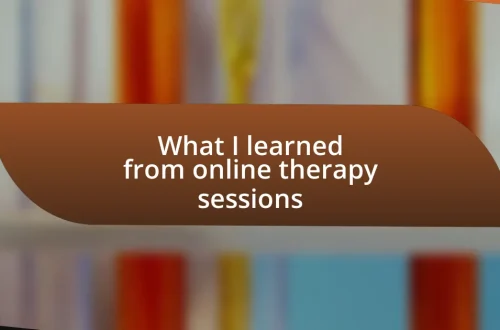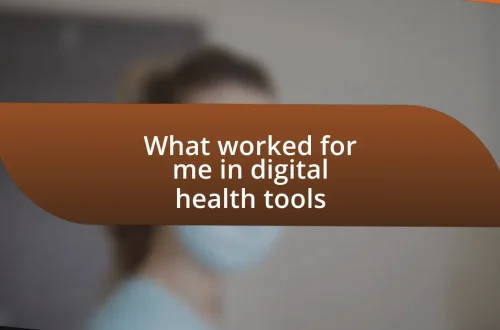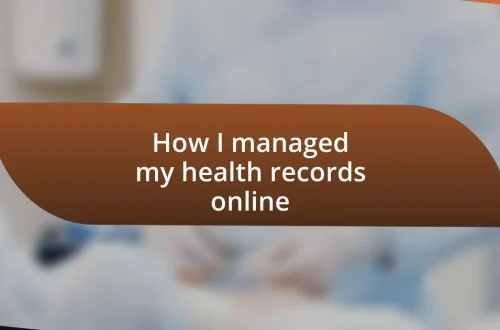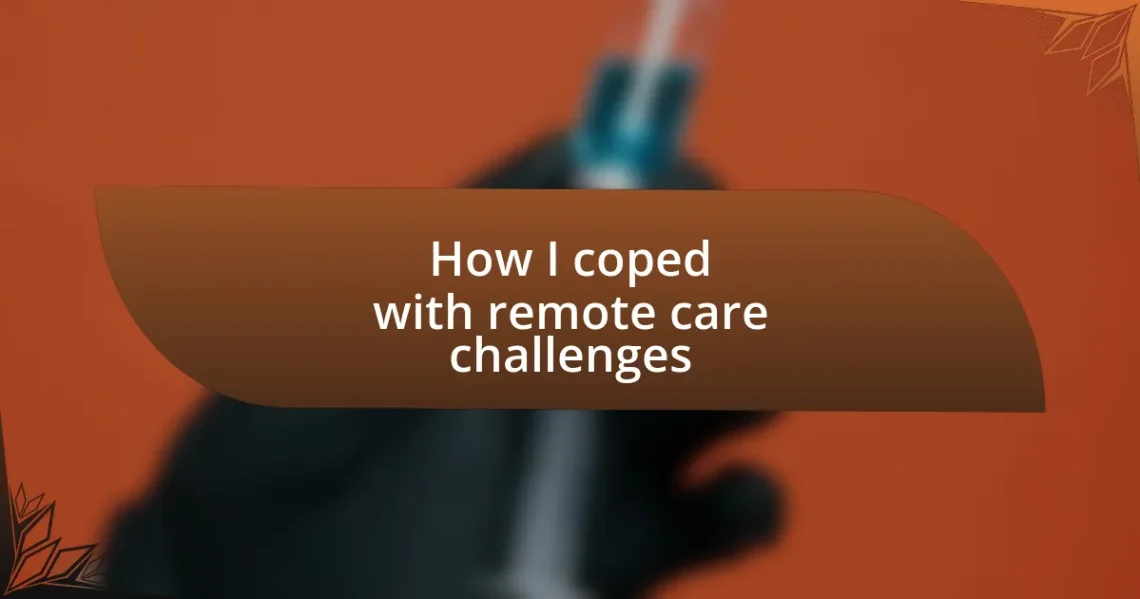
How I coped with remote care challenges
Key takeaways:
- Clear communication strategies, including setting expectations and utilizing multiple channels, are vital for effective remote care.
- Leveraging technology with secure platforms and integrated scheduling enhances the remote care experience and patient engagement.
- Establishing structured daily routines fosters productivity and well-being, and incorporating self-care is essential in a remote work environment.
- Building a support network through informal chats and reaching out for help mitigates feelings of isolation and provides emotional support.
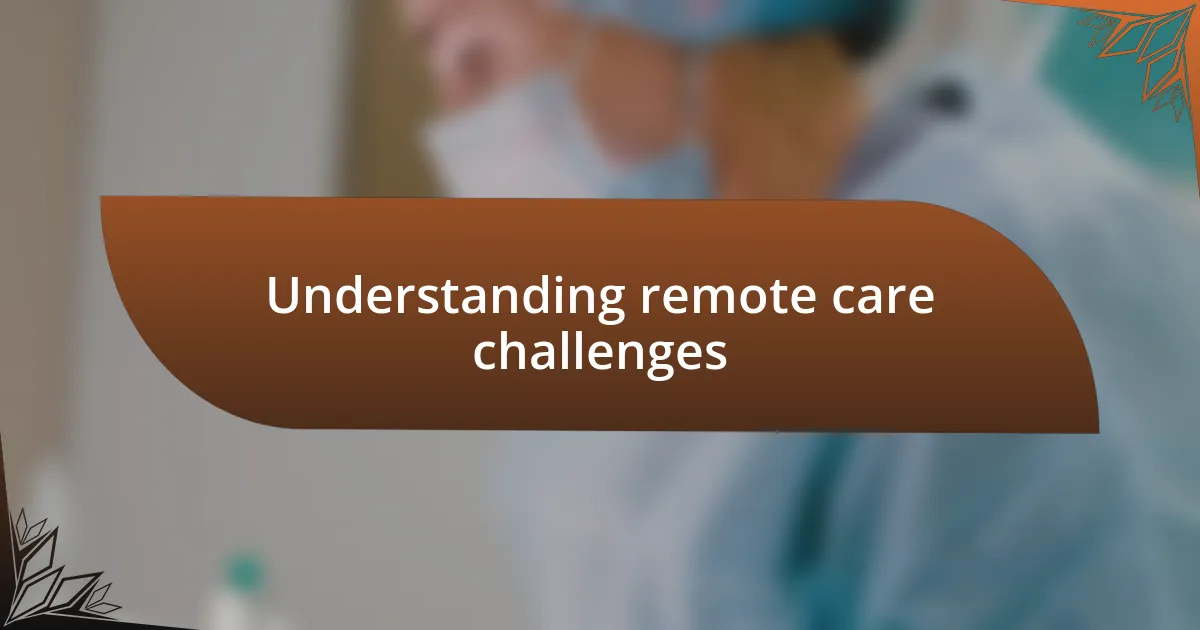
Understanding remote care challenges
Remote care challenges are incredibly multifaceted. I’ve often found myself pondering how technology, while a bridge for many, can sometimes feel isolating. Have you ever experienced that awkward moment during a video call, when it seems like the connection is more distant than ever? It happened to me, and I realized that despite the convenience of remote care, the subtle human interactions are often lost.
One major challenge I encountered was ensuring clear communication with both patients and healthcare providers. There were times when I felt like I was playing a game of charades, trying to decipher a patient’s concerns through a screen. It made me appreciate the nuances of face-to-face conversations, those small cues we often take for granted. Isn’t it strange how much context can be lost when we’re not physically present?
Finally, technology issues can add a layer of stress that is hard to ignore. I vividly remember one session where my connection dropped right as I was about to make a crucial point. The frustration that washed over me was palpable, and it made me wonder: how do we create a seamless experience when it’s so easy to stumble? This reflects a broader concern in remote care – reliability is essential for both the caregiver and the patient feeling secure and supported.

Developing effective communication strategies
Developing effective communication strategies in remote care is essential to overcoming the barriers that arise from the lack of physical presence. I’ve learned the hard way that establishing clear expectations right from the start can make a significant difference. For instance, I once scheduled a telehealth appointment only for the patient to misunderstand the time zone difference. This mishap led to frustration on both sides, underscoring the need for clear communication about logistics.
It became evident to me that using multiple communication channels—like video calls, emails, and text messages—greatly enhances understanding. One time, after a challenging video consultation, I followed up with a simple email summarizing our discussion points. It turned out that this small gesture helped the patient feel more at ease and aligned with the care plan we had discussed. Have you ever noticed how a brief written follow-up can sometimes bridge the gap left by a remote conversation?
To effectively navigate these challenges, I started incorporating visual aids, such as infographics and charts, into my discussions. When I first used a shared screen to walk a patient through their care plan, it felt as if a light bulb had gone off for both of us. The visuals helped clarify complex information, making the conversation much more interactive and engaging.
| Strategy | Description |
|---|---|
| Establish Clear Expectations | Clearly communicate appointment logistics and guidelines. |
| Utilize Multiple Channels | Incorporate various communication methods to reinforce messages. |
| Use Visual Aids | Employ infographics and charts to enhance understanding. |
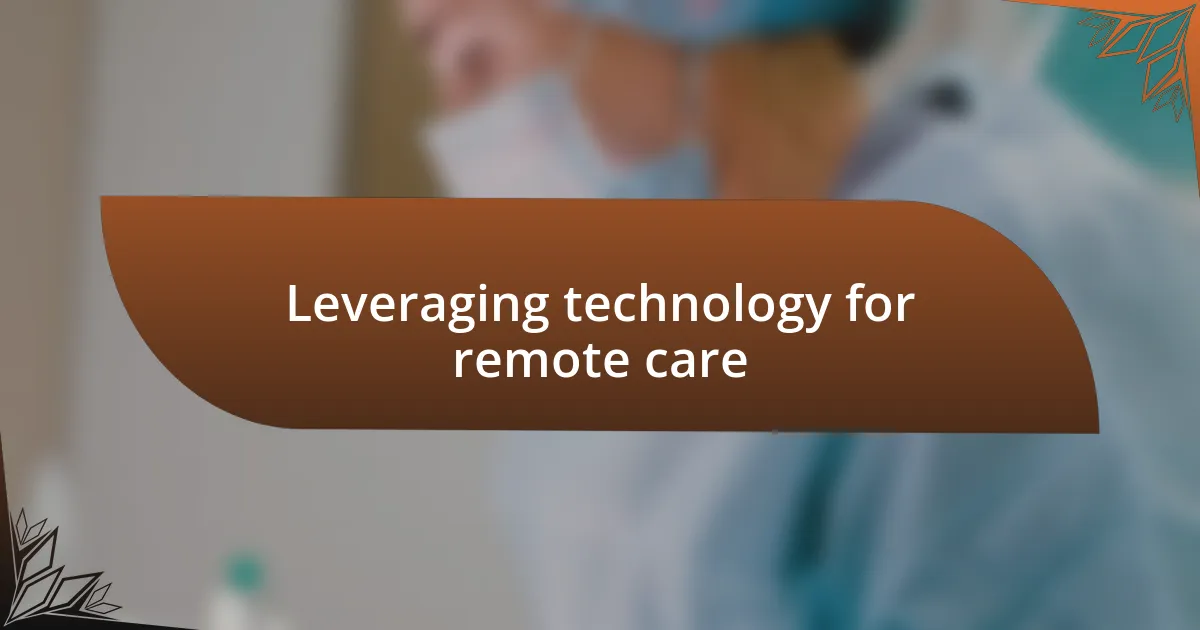
Leveraging technology for remote care
Leveraging technology for remote care is more than just a necessity; it’s a game changer. I remember the first time I used a dedicated telehealth platform. Initially, it felt daunting, but the moment I saw how seamlessly it connected me with my patients, I was genuinely excited. The appointment felt more personal and engaging than I had imagined, allowing me to focus on care rather than technical glitches. This transformation highlighted just how critical the right tools are in bridging the gap created by distance.
To make the most of technology in remote care, I’ve found it helpful to focus on certain key elements:
- Secure Communication Platforms: Using HIPAA-compliant tools ensures privacy and builds trust.
- User-Friendly Interfaces: Choosing software that’s easy to navigate makes it less stressful for both providers and patients.
- Integrated Scheduling: Calendar sync features help avoid mix-ups and keep everyone on the same page.
- Patient Education Tools: Platforms that include resources for patients foster better understanding and involvement.
- Feedback Mechanisms: Implementing surveys or follow-up calls help refine processes and address concerns promptly.
Harnessing technology effectively not only enhances the care experience but also cultivates a sense of connection that can sometimes feel lost in remote settings.

Creating structured daily routines
Creating structured daily routines has proven essential in managing the challenges of remote care. I found that establishing a consistent schedule not only enhanced my productivity but also brought a much-needed sense of normalcy during uncertain times. Have you ever noticed how powerful a simple routine can be? It’s like having a roadmap that keeps you on track, even when the terrain seems unpredictable.
One practical change I made was to set specific time blocks for patient consultations, follow-ups, and administrative tasks. By compartmentalizing my day, I reduced feelings of overwhelm that often arise in the face of numerous responsibilities. I recall a particularly hectic week when shifting to a structured routine transformed my stress into a rhythm; it felt liberating to see tasks unfold smoothly instead of getting lost in a chaotic shuffle.
Moreover, I integrated moments of self-care into my schedule, which made a significant difference. Allowing brief breaks for stretching or a quick walk around my home were crucial for maintaining both my physical and mental well-being. It made me realize that routines are not just about work but also about nurturing ourselves in the process. This balance is key—how do you intend to incorporate self-care into your own daily rhythm?
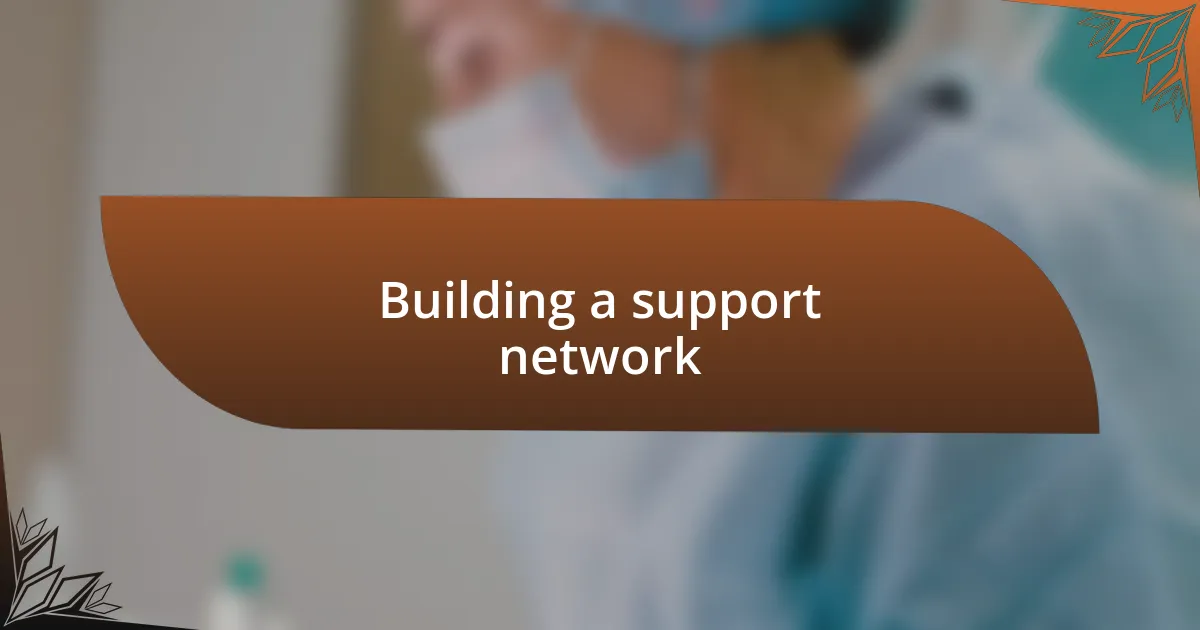
Building a support network
Building a support network during my experience with remote care was a game-changer. Initially, I felt isolated, overwhelmed by the distance from coworkers and patients. It struck me that reaching out for help could foster connections I desperately needed. I started by joining online forums and community groups, discovering that many others were facing the same challenges and feelings. Have you ever felt that spark of camaraderie when you find people who truly understand your situation?
One of my most impactful decisions was to connect with colleagues through virtual coffee breaks. These informal chats allowed us to share tips and tricks while providing emotional support. I remember a day when a simple conversation about handling difficult patients turned into a brainstorming session that resurrected my energy and enthusiasm. Isn’t it surprising how sharing experiences can lighten the emotional load? I found that just knowing I wasn’t alone made a significant difference in my day-to-day outlook.
Moreover, I reached out to friends and family, asking for their understanding and involvement. Sharing the emotional ups and downs of my work helped them see my journey more clearly. I experienced a profound sense of relief when my sister offered to check in with me regularly. That simple act of caring provided motivation and reminded me that support can come from both professional and personal realms. When was the last time you leaned on someone in your life for support?


